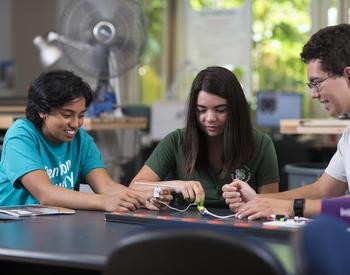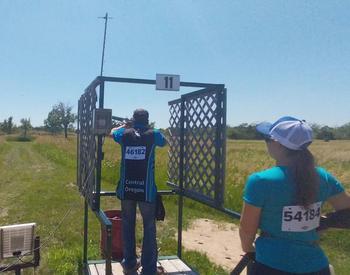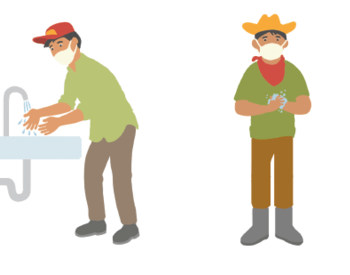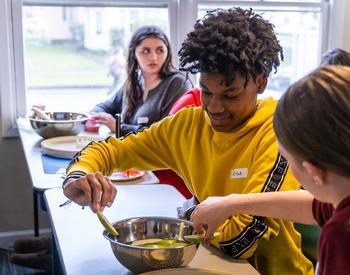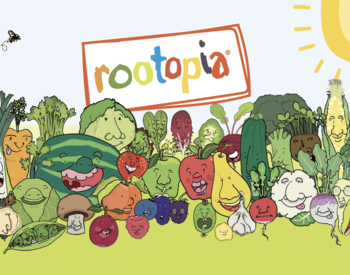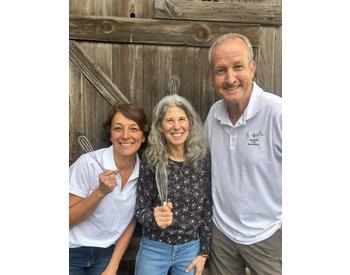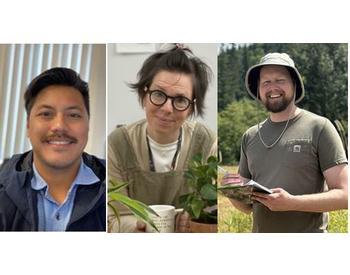Transcript
Today, Malillany and I are visiting Lucky Crow Farm, and we're talking to Farmer Eden about food grown right here in Oregon. Thanks for having us, Eden. Please tell us about your farm.
I started Lucky Crow Farm four seasons ago. We grow vegetables for a CSA (community supported agriculture), a farmers market, and for a few restaurants in the area. We also do education with the local community.
What do you grow on your farm?
I grow approximately 50 types of vegetables on my farm. Everything from potatoes, peppers, onions, and garlic, even zucchini and winter squash.
Farmer Eden, have you always grown ebony, garlic, tomatoes, potatoes, and winter squash?
Yes, I have always grown these vegetables. However, I grow more every year because my farm is still growing.
Today we are going to learn more about how to grow beets with Farmer Eden. How long have you grown beets?
I have been growing beets since I started farming. So I have been at Lucky Crow Farm for four years now.
How do you plant a beet seed?
Well, thank you very much. So I put the beet seeds in this part of the planter. And then I just guide it down the row and drop the seeds from time to time, and they have room to grow. One, two, three, four, five, six.
What do beets need to grow and be healthy?
Beets need a place to grow, light, air, nutrients in the soil, water, and soil. So we have learned that time is something really important for plants to grow. Beets really like cooler weather. So they're really cool at the beginning of spring and autumn, but we can harvest them throughout the summer and even in winter if we let them be in the ground, we can continue harvesting them.
How do you care for beets?
Beets need water, but not too much water. They need to be weeded so that the weeds do not absorb all the nutrients in the soil, and they need to be thinned, sometimes, so that they can have enough room to grow away from their friends.
What time of year are beets harvested?
Um, beets take about a month and a half to grow, but it depends on the season. So in the winter or in the fall, it takes a little while longer because there is less sunlight, but in the summer they grow much faster.
How are beets harvested?
Harvesting beets is extremely complicated. You grab it, and then yank it out of the ground. So, to harvest a beet, first look at the tops of the beets to see which ones are the largest, and if you find one that is big and ready to harvest, you grab the leaves at the base. It's a little difficult to tear the leaves, so I never use a shovel. I just pull them straight out and you pull it out - with all your strength. There you have it! You already have one!
Once the beets are harvested from the farm, you can purchase products online at the Lucky Crow website and collect them at the urban farm. You can also visit the farmers market in Corvallis.
What are the parts of the beet plant that one can eat?
You can eat the entire beet plant, so you can eat the leaves, the stems, and the beet. Beets are a nutrient-rich vegetable with fiber, iron, folate, potassium, and antioxidants.
What is your favorite way to eat beets?
My favorite way to eat beets is to chop them, toss them with a little olive oil, salt, and pepper, and then roast them and eat them with a little goat cheese and crusty bread.
Farmer Eden, thank you very much for inviting us to Lucky Crow Farm today and teach us more about beets.
Do you want to know how we prepare and eat beets? Visit foodhero.org to learn how to prepare this recipe and many more.
Fresher foods taste better. Local fruits and vegetables can be healthier. They retain more nutrients, ripen naturally, and are picked fresh in season. More opportunities to try new foods. We have the ability to ask questions about local products. Less trips from the farm to us. Locally grown vegetables may contain fewer or no pesticides. Want more information, recipes, and resources? Head to the OSU Extension Service and Food Hero to see more.
In 2020, OSU Extension Service Marion County 4-H and SNAP-Ed programs received an Oregon Department of Education Farm-to-School education grant. As part of the grant, students were supposed to tour a local Marion County farm to learn how their food grows, where it comes from, and experience the farm first-hand. Due to the COVID-19 pandemic, the Marion County Farm to School team instead brought the farm to the students and local community!
Join Malillany, a student attending Salem Keizer School District, and Sarah Contreras, an OSU Farm to School Education Program Assistant, on our visit to Lucky Crow Farm in Monmouth to meet with Farmer Eden.
